Live chat has been around for more than a decade, but only recently have companies discovered its profound effect on website conversion rates. Recent data shows that 52% of customers are more likely to repurchase from a company who offers live chat support.
Why does live chat make such a huge difference in conversion rates? It has been suggested that live chat is the only way to provide real human interaction during an online purchase. In other words, customers need questions answered and a sense of reassurance that can be provided only through live chat.
In the book, Rethinking the Sales Cycle, John Holland and Tim Young identify a sense of risk as being the most prominent emotion present in the final stages of the buying cycle. Unfortunately, it’s difficult to help customers through this stage when they see nothing more than a computer screen.
This is where the human element comes into play. Live chat allows your agents to help mitigate that sense of risk by providing reassurance and a sense of value in the product being purchased. The positive difference is undeniable.
Below are 25 tips to help you get started with live chat. Be sure to read through to the end as you’ll see more advanced techniques towards the end of the post.
Make Online Chat More Effective
1. Provide customers with a transcript
When customers chat with chat agents, they pick up useful information they may want to keep in their records. The problem is that most people don’t record every conversation so this information can get lost.
Action: At the conclusion of a live chat session, offer to email a copy of the transcript to your customer for their records.
2. Use canned messages
When customers arrive within a live chat conversation, they should be greeted professionally and with courtesy. But it can take a lot of time for your chat agents to type out these standard messages time after time. This is where automated canned messages can really help.
You can use carefully worded standardized canned messages to automate parts of the conversation and augment your professional profile. Use this feature with good judgment, because too many canned messages can make your customers think they’re talking to a machine rather than a real person.
Action: Create a set of professionally designed pre-canned messages and train your chat agents on how to use them.
3. Use targeted proactive chat
Customers won’t always initiate the chat conversation so you will need to proactively identify individuals who may need help and then raise the chat window with them. Customers may refuse the offer to engage in live chat, but this is not bad. In fact, just raising the offer to chat is sufficient to convey a sense of goodwill.
Consider allowing customers to browse on your site for a time before raising the offer to chat. This gives them time to get oriented before being interrupted.
Action: Identify a list of target pages where you want to increase the conversion rate, and program them to automatically raise the chat offer after a period of 30 – 60 seconds.
4. Use pre-chat survey
When customers initiate a chat session, they should be allowed to provide some preliminary information, within a pre-chat survey, that will set the direction of the chat session. For example, they can provide their name and a quick description of what they’re looking for. The chat agent can then enter the conversation prepared to answer the customer’s concern.
The pre-chat survey also allows you to quickly route the chat session to the agent who is most qualified to handle the conversation.
Action: Design a pre-chat survey form that allows customers to set the direction of the conversation. Don’t ask too many questions – just ask the questions that will allow your chat agents the necessary background so they can provide a quick and courteous answer.
5. Promote cross-department cooperation
Your chat agents should be considered an in-house sales and support department, and as such, they should understand all product lines within your organization. This qualifies them to provide a more thorough perspective when dealing with customers – either as salespeople or as support personnel. Chat agents that know about all of your product lines can quickly identify upsell and cross-sell opportunities.
Action: Put your chat agents through the same preliminary training programs as the salespeople.
6. Use a typing indicator
Your live chat agents should be able to see what customers are typing while they type it. It not only gives the agents insight into what the customers are thinking as they type, but it allows the alert chat agent to respond more quickly with an answer.
Chat agents also should be alerted when a customer has hit the “send” button during the chat. The alert should be audible, visible, or both, and it can be used to interrupt a busy chat agent and let him know that a customer is awaiting a response. Keep in mind that your chat agents are likely to be handling multiple conversations at the same time, so anything you can do to help them multitask will help.
Action: Ensure your chat software is set up so that your agents can see a customer’s words as they type, and issue an alert when the customer has hit the “send” button.
7. Use chat transfer
Your chat agents shouldn’t be required to know everything. Individual agents may have different areas of expertise. If a chat agent is involved in a conversation that is outside his current level of expertise, he should quickly transfer to another agent. When this happens, ensure that the customer is aware of the transfer.
Action: Train your chat agents to transfer chat sessions when required. Also, each agent must have a list of other agents and their levels of expertise.
8. Accept chat requests automatically
Customers shouldn’t have to wait for someone to answer the chat request. Once a customer initiates a chat session, the system should accept the chat automatically and inform the customer that a chat agent will respond right away. (During this time, the customer can fill out a pre-chat survey, as mentioned in item 4.)
Your response time should be less than 10 seconds. The only way to guarantee a quick response is to accept all chats immediately.
Action: Initiate an automatic response to all incoming customer chat sessions, and allow the customer to identify the problem area. Use pre-canned messages to welcome the customer and let him know that action is taking place immediately.
9. Check chat history for returning visitors
Chat agents may gain valuable perspective by quickly reviewing previous chats with an individual customer. This allows the agent to come up to speed on issues that the customer discussed previously, and to proactively follow up with any questions. Customers will appreciate the fact that they don’t have to repeat their previous problems to newly assigned chat agents.
Action: Provide chat agents with previous chat transcripts, if available, for all incoming customer chat requests.
10. Add a chat button to email
Customers who receive email from you should have a chat button embedded directly on the email. This is a nice feature that allows your customers to provide direct feedback on questions they may have regarding the email. Emails could be anything from periodic newsletters or follow-ups to individual questions or grievances.
Action: Ensure your outbound marketing team is trained on how to include a chat button with their email campaigns. Also, make sure they coordinate with the chat agents whenever they include a chat button on an email so that the agents are prepared to address any questions or concerns raised in the email.
11. Integrate live chat with your CRM tool
Your chat agents should have access to customer sales records. This allows them to update the CRM records after a chat session. It also allows your chat agents to gain additional perspective into each customer’s history if such history already appears within the CRM tool.
In any case, all contact with customers (or potential customers) should be recorded for future reference.
Action: Train your customers on your CRM tool and provide them with limited accounts so they can view and update individual records as the need arises.
Improve Online Sales
12. Provide agents with visitor behavior analysis
Chat agents should be aware of each visitor’s online behavior before the chat session begins. Agents should know the pages that the customer has visited, and if possible, whether the customer has been on the site before. This allows the agent to more accurately understand what the customer might be looking for within your site.
It may also allow you to more intelligently route the chat session to an agent who is best qualified to answer questions that might arise from the pages that the customer visited. For example, a customer visiting pages of wireless products is more likely to ask questions related to wireless technology, so the chat session should be routed to your wireless chat expert.
Action: Ensure visitor history is available to your chat agents prior to answering a chat request.
Caution: Chat agents should never reveal the fact that the customer’s online behavior was being monitored. Nobody likes to be spied on!
13. Issue personal chat invitation
This is similar to the proactive chat, identified in item 3 above, but different in its personal nature. Rather than providing an automated chat invitation, the personal chat invitation is far more attractive, actually offering the name and picture of the chat agent willing to help.
Some companies have found a 3:1 ratio of people willing to chat when offered a personal invitation over a standard automated offer.
Action: Encourage your chat agents to initiate personal chat invitations whenever possible. The additional human touch will encourage more chat activity. If possible, track the success rate to see its effect on conversion.
14. Upsell and cross-sell
Your chat agents should be highly aware of the sales techniques of upselling and cross-selling. Basically, an up-sell is where a customer is persuaded to purchase a more advanced or upgraded version of the product he originally intended to purchase.
For example, a person wants to buy a normal watch for $19.95 but instead decides to purchase a solar-powered watch for ten dollars more. He is upsold with the idea that the battery would never require changing, so in the long run, he saves money.
A cross-sell occurs where a person is persuaded to purchase accessories for his initial product. For example, while purchasing a digital camera, a customer is reminded that he’ll need some extra memory cards in case he runs out of memory before he can upload his photos.
Action: Provide basic sales training for your chat agents so they can identify and act upon upsell and cross-sell opportunities.
15. Strategically place live chat buttons
All of your product pages should feature a live chat button in a consistent location. Customers should know where to go if they need help. These buttons are typically located in the upper-right corner of each page. Some of the more sophisticated sites place these buttons in an animated “slide-out” position along the left or right margin.
Do not place these buttons along the bottom of the page, as they will disappear below the fold and may never be seen.
Action: Make arrangements with your website designer to provide the chat button in a strategically located spot on each page of your website.
Improve Your Support Team
16. Offer a post-chat survey
The post-chat survey provides you and your team an opportunity to evaluate your performance and make adjustments. Customers should be allowed to provide feedback, even if they don’t take advantage of it. The message to your customers will be that you care enough about their experience to ask them to rate your performance.
Action: Initiate an automatic survey after each online chat session and ask no more than 5 multiple-choice questions that will gauge your performance. The last question should be an open-ended text message where customers can express specific problems or provide specific suggestions.
17. Use chat agent performance reports
Your live chat toolbox should include a Key Performance Indicator (KPI) that conveys the performance of your chat agents. Each post-chat survey should be associated with the chat agent(s) that handled the communication, and the score should be analyzed periodically to identify trends.
Keep in mind that there may be other factors involved in a chat agent’s score. This can be tracked with other KPIs such as the number of visitors on the website during the chat session and the size of the chat agent’s queue. You may want to adjust your staffing depending on trends that you identify.
Action: Track a set of KPIs and associate them with each chat agent. Analyze the results periodically to locate trends that may need to be addressed.
18. Collect chat transcripts to populate your FAQ or Knowledge Base
Your support department generates a lot of information that would be of use to future support calls. You can use your chat transcripts to help populate your FAQ database simply by linking them into the database, along with a good set of keywords. Chat agents working on support calls can quickly search this database to look for similar problems and use the information to help solve the current problem.
Action: Set up a chat gateway to your internal knowledge database and train your support chat agents to use it frequently. Support calls that resolve a problem should be documented in the database, along with a good set of keywords that will help locate the same problem in the future.
19. Ensure live chat agent training and motivation
A well-trained chat agent is a motivated chat agent. People do not like to be placed in situations where they do not understand what is required of them or how to do it. Chat agents that work in the support department should not only be trained in your products but also should be completely confident in their ability to conduct a good online chat session.
Recognize that it takes a bit of training to become a good chat agent. Chat agents typically handle 4 – 6 conversations simultaneously, but it takes practice to achieve this potential.
Action: Initiate a multi-faceted ongoing training regimen for all of your support chat agents and ensure they attend. They will lose motivation quickly if they feel they are overwhelmed and don’t understand what is required of them. Contrarily, chat agents that completely understand the job and have confidence will find this career exciting and rewarding.
20. Provide online support 24×7
Depending on the geography of your customer base, you may need to keep your chat lines open 24×7. This doesn’t necessitate burning the midnight oil. You can contract with people all around the globe if your budget allows. If you cannot keep your chat line open 24×7, then make sure you post your chat hours clearly on the chat button itself. You may even want to disable, or “gray-out,” the button in your off hours.
Action: Analyze your customer base to see if it makes sense to keep your chat line open 24×7. If so, consider retaining personnel around the globe. If not, be sure to post your chat hours directly on the chat button.
Improve Customer Experience
21. Be genuine
Every live chat session is an opportunity to establish your company as being honest and truthful. Don’t squander or short cut this opportunity. As they say, you get only one chance to make a first impression. Chat agents should communicate honestly with your customers and let them know the limits of what they can do.
If an agent needs to transfer the customer to a more knowledgeable person, he must do so without shame or any sense of inadequacy. Many – if not most – customers have a sixth sense and know when the chat agent is stretching the truth. If your chat agent lies to a customer, it eventually will come back to haunt you and cause more problems than it solves.
Action: Carefully screen chat agents to see how they handle pressure. One good technique is to quiz an agent by asking questions that get increasingly difficult until you reach the edge of his personal knowledge, and then see how he handles the situation.
22. Be helpful
Even if your chat agent cannot directly help a customer with a problem, he still can be helpful by either transferring the conversation to someone who does know the answer or conducting research right there online. If the research takes too much time, the chat agent should offer to email the answer to the customer.
In all cases, help is the key attribute to convey to the customer. If a customer didn’t need help, he probably wouldn’t get into the chat discussion in the first place!
Action: Ensure your chat agents understand the escalation process so that all questions and concerns can be answered within the ongoing chat session. If a question or concern cannot be answered, the chat agent should write up a helpdesk ticket and flag it as urgent. (The situation is urgent because a potential sale is pending!)
23. Be present
Good chat agents can handle 4 – 6 simultaneous conversations and make each customer believe he’s getting undivided attention. This requires some degree of training and expertise, so carefully analyze each agent’s performance level and keep him or her out of the more advanced positions until they’re ready to handle the pressure.
The overriding concern is that customers must be made to feel important; however, if it takes several minutes to respond to a customer’s question, he will not feel important, and he will take his business elsewhere.
Action: Measure every response turn-around time to ensure customers get a sense of having undivided attention. Use canned messages whenever possible, so that the chat agent can more efficiently handle each customer.
24. Be thankful
Many spiritual and religious texts express the importance of maintaining an “attitude of gratitude.” In a spiritual sense, this expression conveys the importance of being grateful for all that life provides. Stated simply, the expression of gratitude often yields more things to be grateful for.
Interestingly, this attitude also applies to business situations. Even though many customers may think it trite, they still appreciate someone who is grateful for their business. The psychological effect on customers cannot be ignored; it often brings them back, because they would rather deal with people who are grateful than those who just take their business for granted.
Action: Work gratitude into every canned message your chat agents send out to your customers. Ensure your agents express gratitude in every exchange. They don’t have to knock over customers with a million “Thank you” messages, but sometimes just a simple “Thanks” can really go a long way.
25. Be engaging
An engaging person is a person who has mastered the art of conversation. While some gifted people are born with this talent, the rest of us have to learn it. It is likely that most of your chat agents will fall into this latter category. There are some simple rules to follow when engaging with your customers, and these rules should be practiced with your agents, both online and in normal conversation. Briefly, these rules are:
- Listen carefully and ask probing questions.
- Know the product and be ready to offer key insight into the problem.
- Remain focused on the customer’s issues, not your own.
- Don’t try to impress the customer with your superior knowledge.
- Use proper grammar, particularly when conversing with those who don’t share your native language.
The above rules are fairly abbreviated, but you get the point: Customers come to you to engage in conversation that will help them, and by helping them, you obviously help yourself.
Action: It may seem old-fashioned, but ask your chat agents to read the book, How to Win Friends and Influence People by Dale Carnegie. The book may be old, but the advice is just as relevant as ever. It will help train your chat agents in the gentle art of engaging with customers, leaving them with a true sense of loyalty toward your company.
Summary
Live chat is rapidly growing in popularity due to its ability to provide a human touch during the conversion process. The “human” part of live chat is expressed through your staff of chat agents. These chat agents must be every bit as talented as your salespeople and support personnel, with the added ability to express themselves online in ways that engage with customers on a personal level. The 25 tips presented in this article will help prepare you as you implement live chat on your site.
About the Author: Kevin Gao is the founder and CEO of Comm100, a leading provider of live chat software for business. As a software developer and small business expert, he’s always ambitious to revolutionize online customer service and communication.
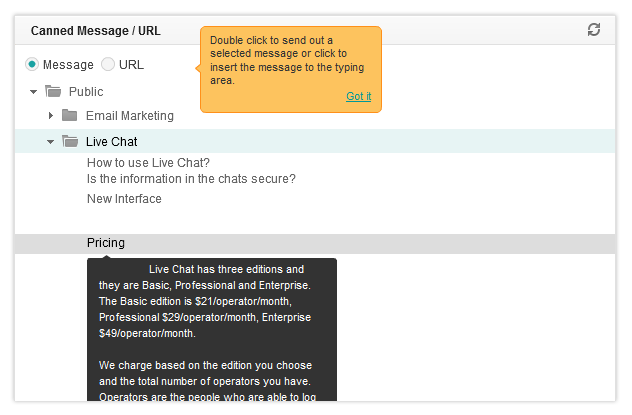
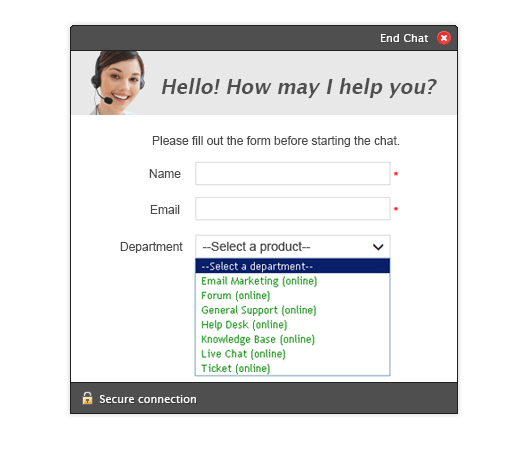
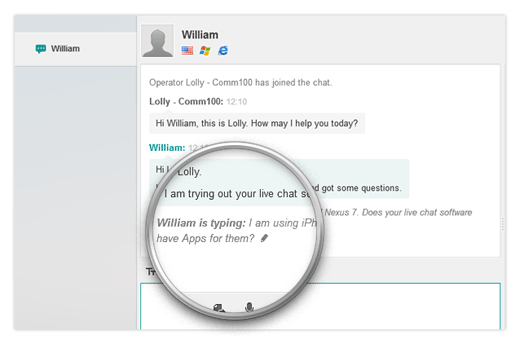
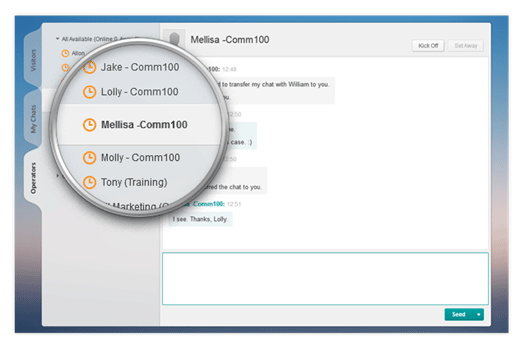
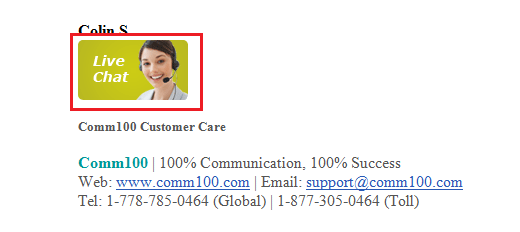
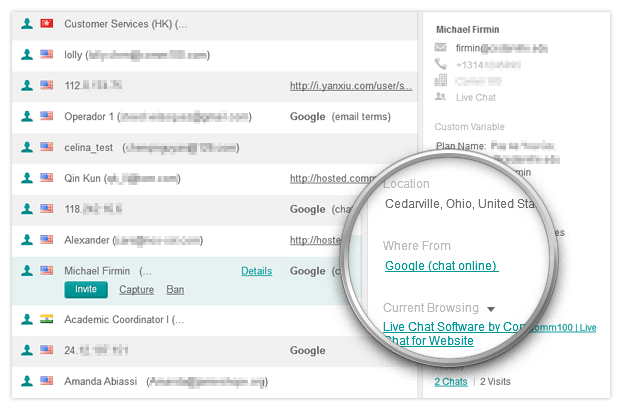
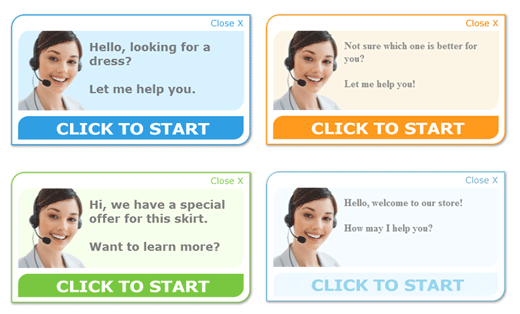
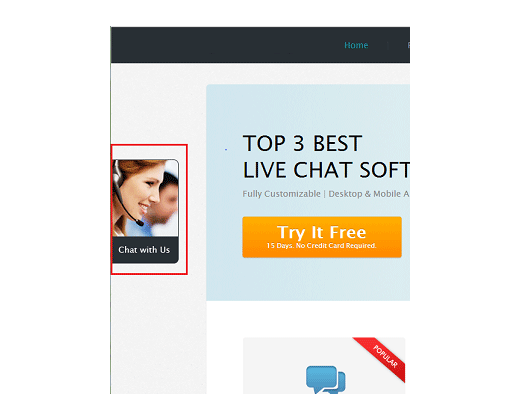
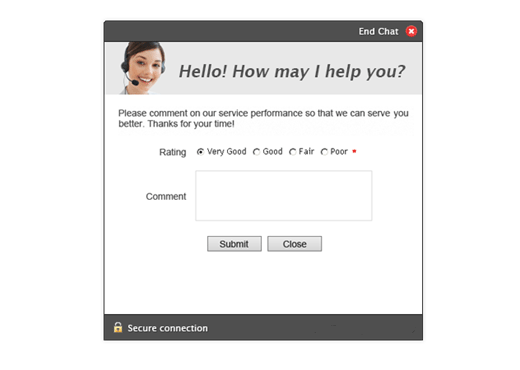
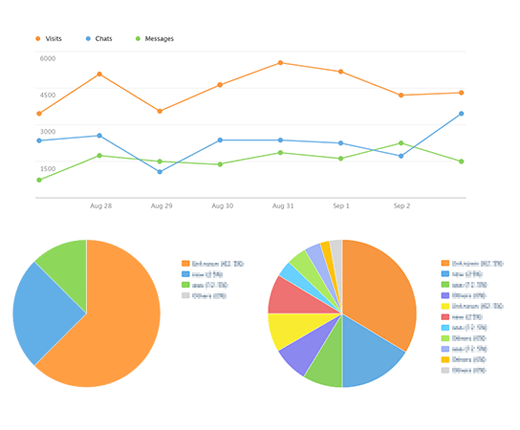
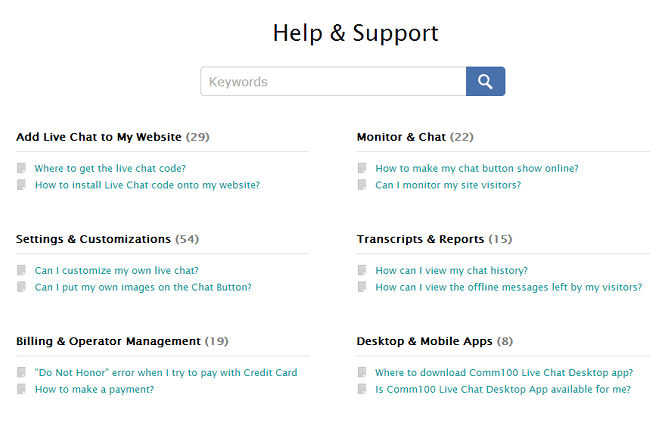
Comments (33)